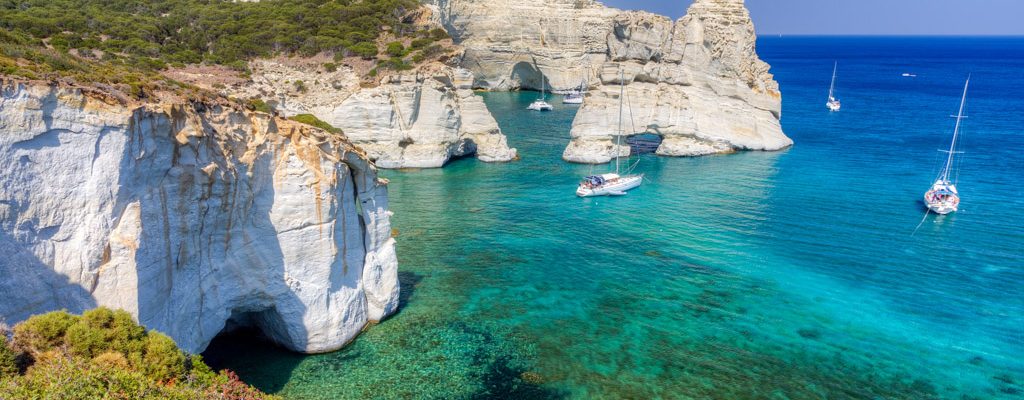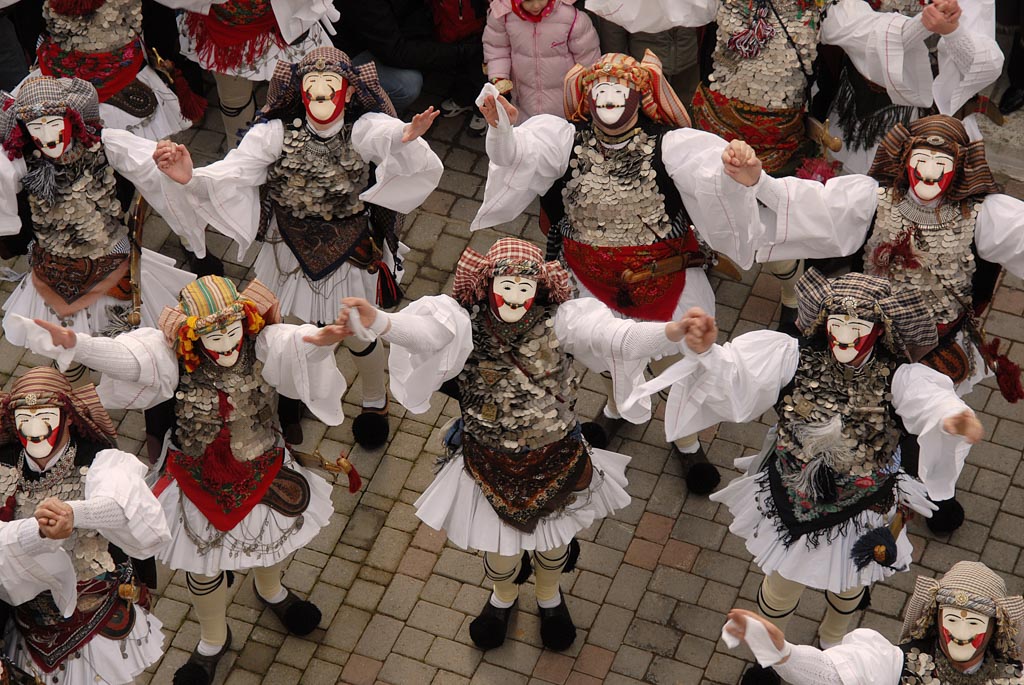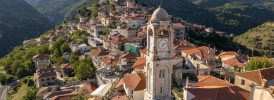The landscape of Greece is famous for its dramatic beauty, and some of that beauty has been shaped by dramatic geological events, welling up from deep in the earth. Of the volcanoes in Greece, Santorini – Thira – is the most famous. But in fact Thira is just one of several volcanoes of Greece that has wrought an extraordinary influence on the landscape and on history. These are magical places, testaments to the raw power and beauty of the Greek landscape.
Explore the active volcanoes in Greece
Methana

The first of our volcanos is very close to Athens, just across the Saronic Gulf. It is not an island, but a peninsula extending into the Agrgolic gulf off of another peninsula. There are actually 32 volcanoes in Methana and they have shaped a dramatic landscape. This is now a mountainous area that is wonderful for hikes through a lush landscape – the flora and fauna of Methana are abundant.

The lip of the volcano makes a fascinating hiking destination. Here, one sees long solid lava flows and formations in red, green, and black. Apart from excellent hiking, Methana is also a good choice for water sports enthusiasts. The island of Poros offers many opportunities for water skiing in particular. Less than 10 km from Methana, Poros is easily reached by ferry and hydrofoil. Back in Methana, enjoy a classic meal at a seaside taverna in one of the authentic and relaxed fishing villages. Like other volcanoes of Greece, the Methana volcanoes have also blessed the area with therapeutic waters.
Milos
Milos is famous for having some of the most spectacular beaches in Greece. And that, of course, is really saying something. The beaches of Milos are not merely beautiful, but often surreal and almost otherworldly. The moon comes to mind when you see some of the spectacular rock formations, such as at the famous Sarakiniko, boldly sculpted in sparkling white. Kleftiko offers a sensational swim around the dreamy rock formations, although it is not a traditional beach as such. Sykia Cave is another such aquatic landscape – once a sea cave whose ceiling has now opened to the sky.
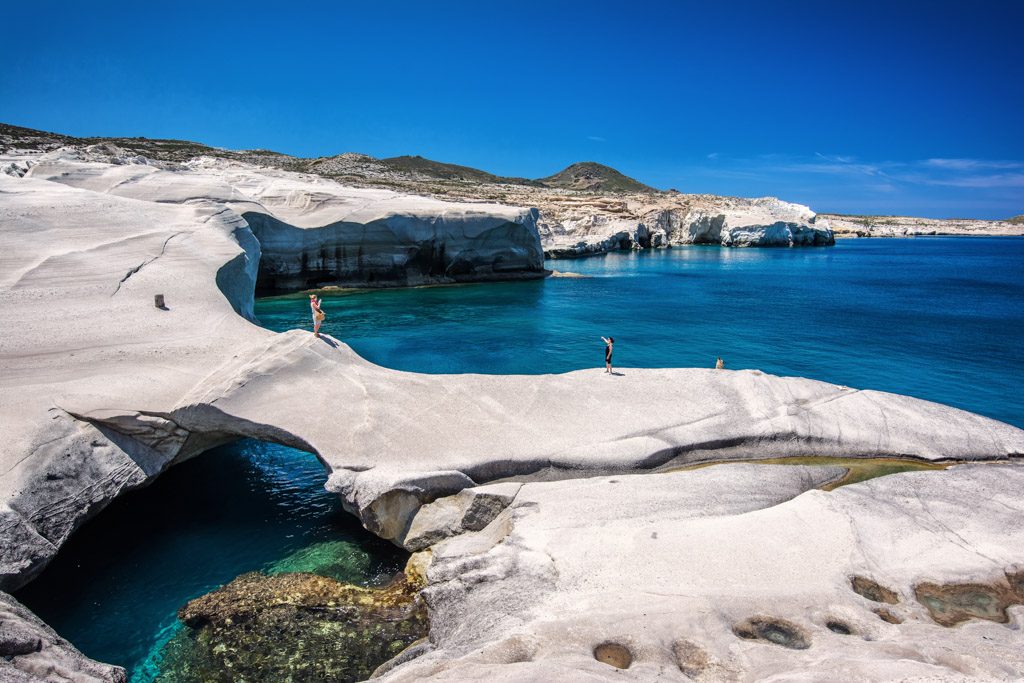
The volcano of Milos has yielded a fascinating mineral profile on the island. This is seen in the bold palette of Kastanas Beach, with shades of ochre, violet, yellow, and pink edging the turquoise sea. But it is also seen in the mines and the quarries of the island. Harnessing the mineral wealth. Bentonite (Europe’s largest bentonite mine is in Milos), kaolin, perlite, pozzolans, baryte, and siliceous stones are mined on the island, and one can learn more about them at the Milos Mining museum. Mining is one of the principal livelihoods of the island.
Although the volcano last erupted in 90,000 BC, it is still active to this day. For example, on the beach Paleohori one can feel the warmth of currents warmed by the volcano. Some parts of the sand are extremely hot but these are covered by rocks, so not to worry. Actually, this patch is hot enough for cooking – one can even have food cooked from the volcano’s heat here.
Milos is directly next to Kimolos – one of the quieter beauties of the Cyclades. Next to it is Polyaigos – the island is named for its inhabitants – “Many Goats” (and no people at all). It makes an enchanting day-cruise destination.
Nisyros
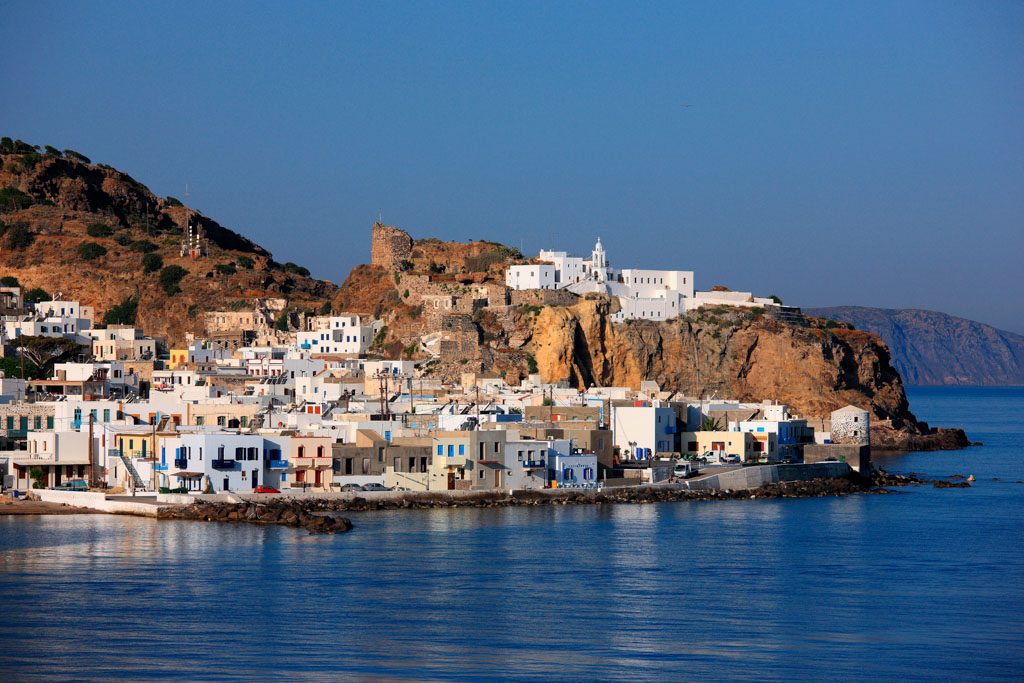
Nisyros is one of the smaller of the Dodecanese islands, with just over 1000 inhabitants in winter. It’s located between Tilos and Kos, and those who seek it out are rewarded with a down-to-earth, relaxed island lifestyle. Like Milos, the geology of the island is shaped by the volcano. There is a caldera of 3 to 4 kilometers in diameter, and within this there is the famous Stefanos crater – 27 meters deep and some 300 meters across This, while dormant, is still active and has fumaroles at the craters – openings in the crust of the earth from which gasses and steam escape. The last eruption is not really ancient history – the last steam explosion was in 1888, which followed two explosions of ash in the 1870s.
The beaches of Nisyros are famously pristine. They feature rocks and pebbles – like the beach Hohlaki with its black pebbles, and lies with its dark sand and pebbles. There are also sandy beaches, like Pachia Ammos (“Thick sand”).

The volcano has also given Nisyros hot springs. The most famous of these is Thermiami – prized since ancient times. In fact, an inscription on the ruins of a bath suggests that Hippocrates himself selected the spring as a place for therapeutic cures. Another spring flows in the cove of Avlaki.
This small island is also a magnet for culture, particularly because of the Sterna Foundation which sponsors residencies, workshops, exhibitions, and events throughout the island.
Santorini
The eruption that shaped Santorini with its distinctive crescent curved around the famous caldera in fact also profoundly shaped the history of Ancient Greece. The eruption, which took place around 1600 BC, was one of the largest and most powerful volcanic eruptions in human history. It’s sometimes called the Minoan eruption, as it not only destroyed the Minoan civilization of Akrotiri but also deeply impacted the Minoan civilization of Crete through the subsequent earthquakes and Tsunamis. This advanced Bronze Age civilization never recovered from the devastating geological blow.
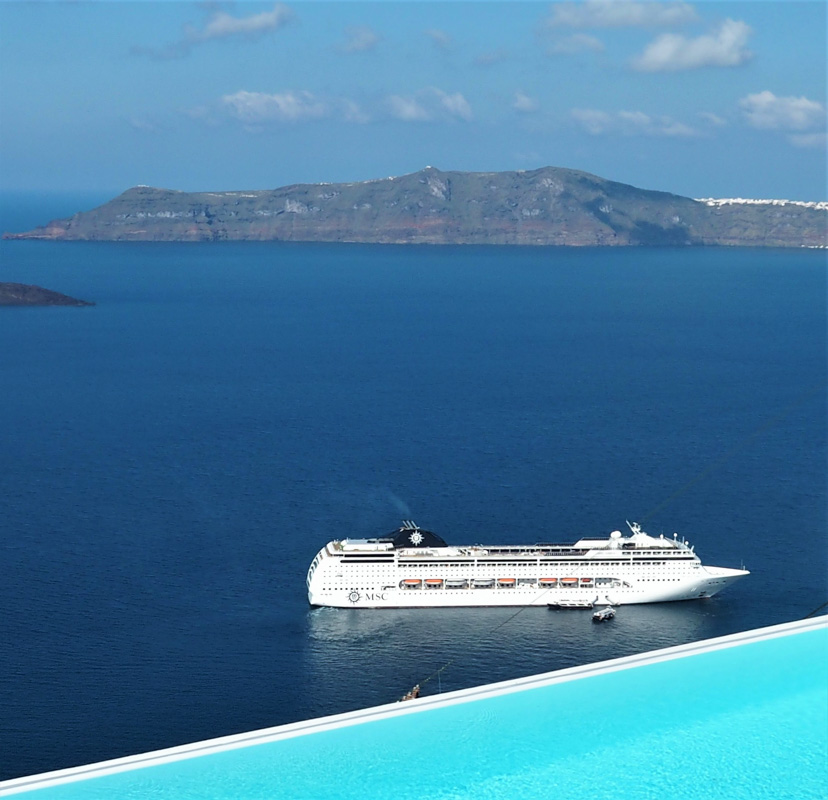
That eruption created one of the earth’s most mesmerizing locations. Apart from the great cliffs of Thira rising nearly 400 meters above the shimmering caldera – site of legendary sunsets and vistas – they shaped fantastic beachscapes, including Red Beach, White Beach, and Monolithos Beach.
It also defined the unique mineral composition of the soil. Why is this of interest? The wine, for starters. The famous Assyrtiko finds its most pronounced and unique expression in the volcanic soil of Santorini. There are also the grape varieties Athiri and Aidini for whites, and the Mandalaria for red. The famous Vin Santo of Santorini is an elegant dessert wine with enough acidity and complexity to make it an interesting pairing with a number of foods. But it’s not just oenophiles who fall in love with the fruits of Santorini’s unique soil. The tomatoes here are exceptional in their concentration of flavor, and the humble but wonderful fava – a split pea puree – shines with the wild capers so famous in the Cyclades.
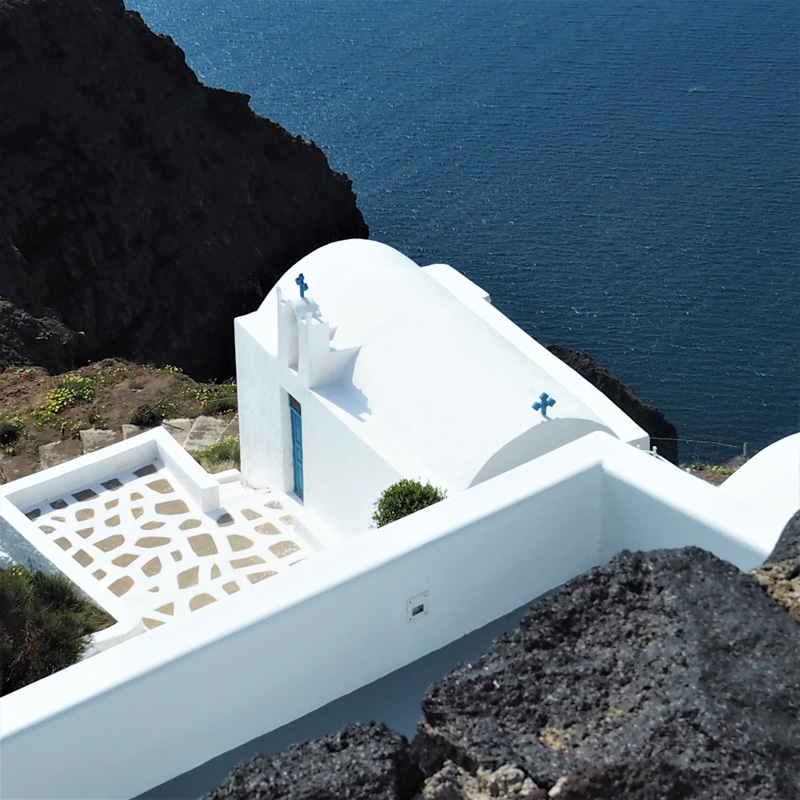
Lastly, a visit to the archaeological site of Akrotiri gives a fascinating insight into both the human history and the geology of Santorini. Just like at Pompei, the lava has preserved beautifully the civilization that the eruption destroyed. Here you’ll visit one of the most significant prehistoric settlements of the Aegean. From the Late Neolithic era (4th millennium BC) through the Late Bronze Age (20th through 17th centuries BC) this site was inhabited, eventually becoming a prosperous town of multi-story buildings with sophisticated wall paintings and elegant furnishings, and signs of trade with the mainland, Syria, and Egypt.
Santorini, due to its unique geology and its classic Cycladic architecture is home to some of the most spectacular boutique hotels in the world. One can enjoy a unique stay that unites the novel with the authentic.
Have you visited any of the Volcanoes of Greece?

